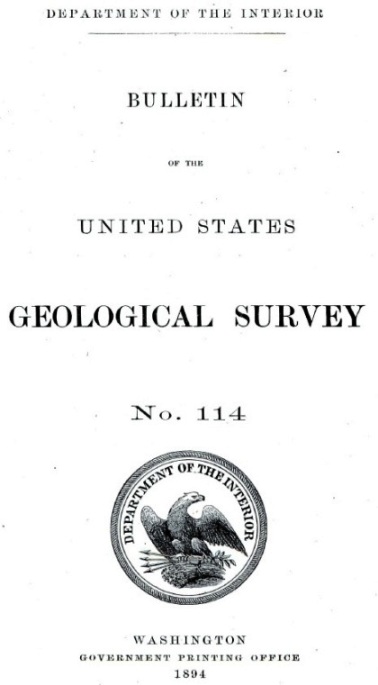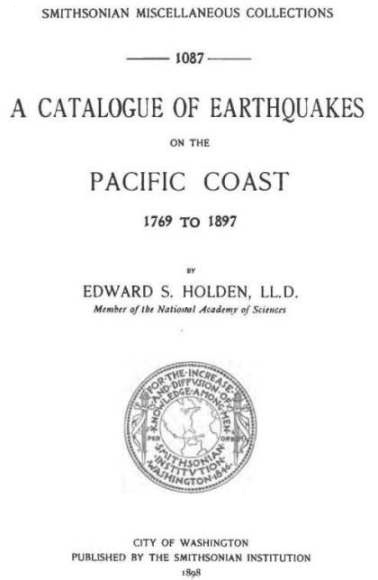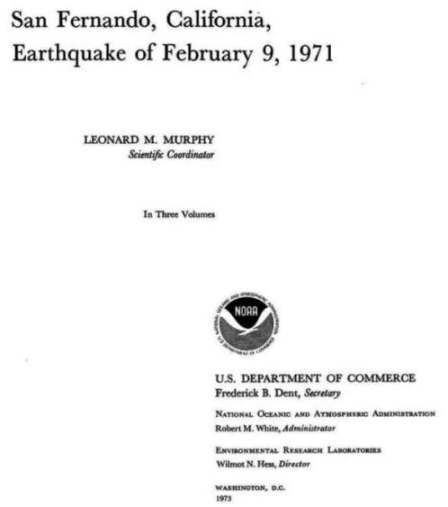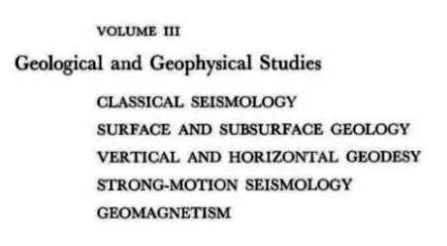1893 Earthquake
On Tuesday April 4, 1893, there was a major earthquake in Pico Canyon. It was estimated by the United States Geological Survey to have a Richter magnitude of 5.75. This estimation was, of course, many years later since the Richter scale was not devised until 1935 by Charles F. Richter, but was based on the amount of damage that was reported.
According to Leon Worden (The Story of Mentryville, 1996), "many folks in 1893 believed Mentry's drilling works set off the earth's movement. Mentry dismissed the notion." John Boston (Daily Signal, 2003) states that the earthquake "caused an angry mob to march from Newhall to Mentryville. Locals blamed the drilling for oil in Pico as the cause of the quake, and some demanded they stop."
Note that in the following documents a Mr. Thomas was still holding on to the railing to the Long Bridge after the quake was over. It has been reported that the Long Bridge was destroyed by the quake, but this account (not to mention the picture from a few years later - see the historical photos page) disproves that notion.
In "San Fernando, California, Earthquake of February 9, 1971, Volume III, Geological and Geophysical Studies" (Leonard M. Murphy, Scientific Coordinator, U.S. Department of Commerce, Washington, D.C., 1973), Charles F. Richter wrote a chapter called "Historical Seismicity of San Fernando Earthquake Area". Here is what is written about the 1893 quake:
1893 April 4 (Tuesday). This, the Pico Canyon earthquake, is of great interest for comparison with the 1971 event. The same general area was heavily shaken, but the center of disturbance appears to have been farther west, and the magnitude was probably less than in 1971. Nearly all accessible information appears in Edward S. Holden's "Catalog of Earthquakes on the Pacific Coast", 1769-1806; it is here transcribed in full, with slight rearrangements, omitting only (1) Holden's assignments of intensities on the Rossi-Forel Scale following each individual item, which add nothing to our knowledge of the earthquake, and (2) reported times of occurrence. There was evidently only one large shock, for which the time is stated variously from 11:40 a.m. to a few minutes after 12 noon; these differences can only represent imperfect observation or inaccurate timing due to clock error, etc. The earliest reported times are probably most nearly correct.
Richter then has a transcribed version of what was in Holden's book. Instead, here are the actual pages from the book (pp. 215-218):
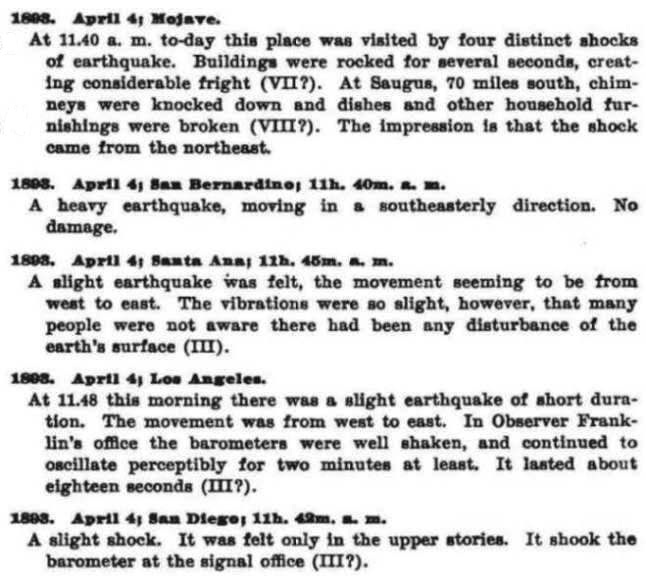
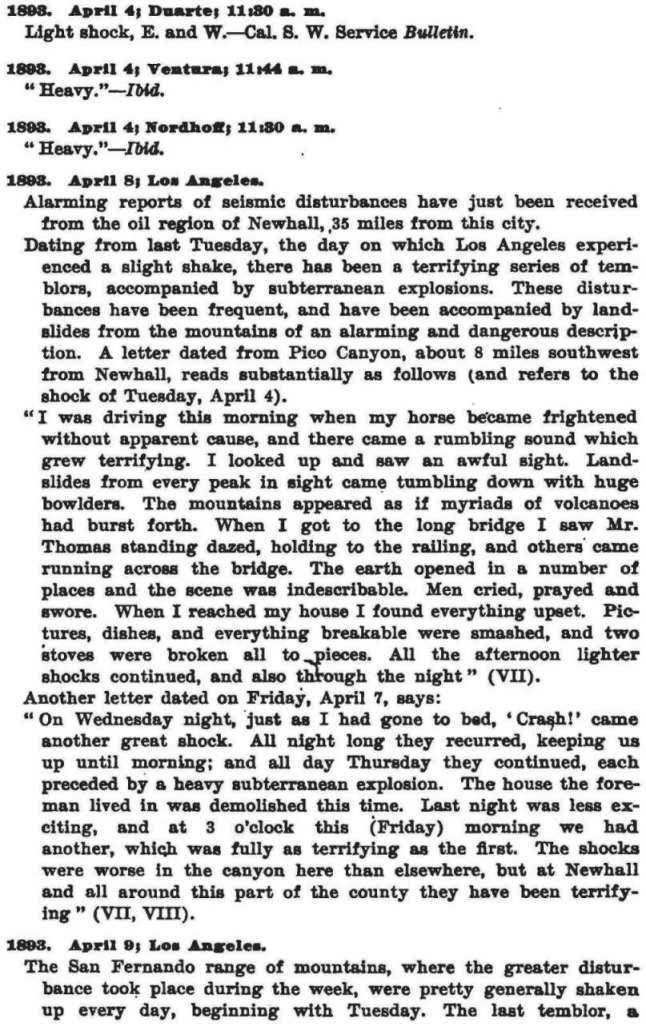
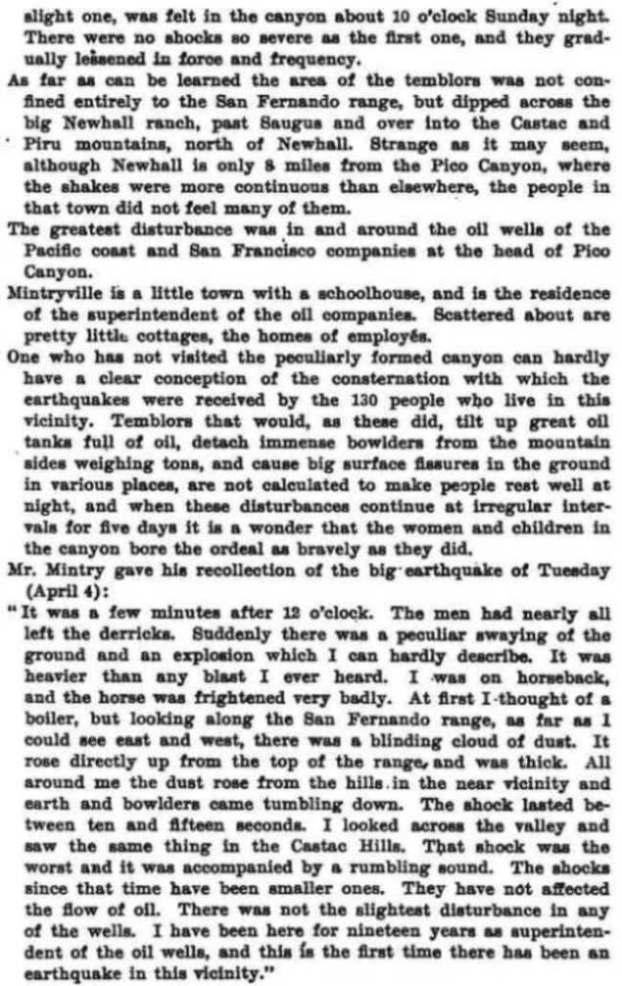
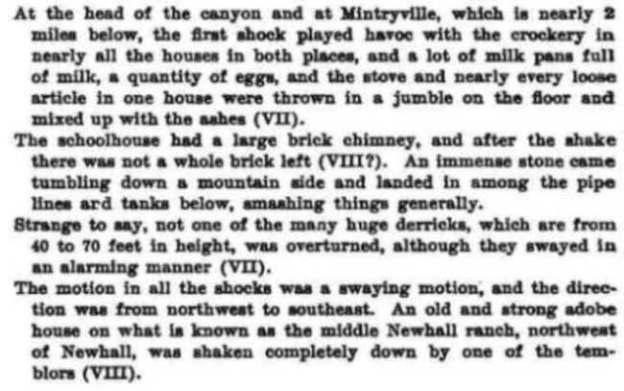
Here is the rest of what Richter wrote:
These reports, assembled by Holden, call for further comment. The unreliability of times has been noted previously; the best time for the main shock is probably 11:40 a.m. That it was called a few minutes after 12:00, following the work break at noon, at the rather isolated community of Mintryville, probably only means that the office clock was fast.
Directions of apparent oscillation are noted at several points. These, as usual, are of doubtful significance. Indoors, such observations are affected by the oscillation of the structure itself. Outdoors, when reliable, they usually refer to directions transverse to the line from point of observation to epicenter, and are probably due to waves of S-type.
Alternate spellings "Castac" and "Castaic" have long been in use; the latter is now preferred.
There was probably only one really large shock; suggestions that following ones were nearly as strong are not very convincing. It is not unlikely that some of the after shocks originated at very shallow depth, with correspondingly increased intensity near their epicenters. The concluding note which concerned a ranchhouse probably means that it was damaged in the main shock and failed gradually during the aftershock sequence to the point of final collapse.
Mintryville was probably not near the principal epicenter. Equally strong shaking is indicated at Newhall and Saugus, with landslides visible at a distance in the mountains, just as in 1971. The fact that oil derricks were not damaged, nor production affected, makes it unlikely that local shaking at Mintryville was as intense or as strongly long period as were the maximum motions of the 1971 earthquake. It is interesting that some small aftershocks felt at Mintryville were not noticed at Newhall; this would suggest that the epicenters of these, at least, were near Mintryville. Probably there was faulting of considerable extent.
Note that the shaking was called "slight" at Los Angeles. Except perhaps at Mojave, reports from distant points generally indicate lower intensity than for the same localities in 1971, which supports the idea that the main shock of 1893 was of lower magnitude than that of 1971.
The following report is from the Bulletin of the United States Geological Survey No. 114, 1894, by Charles D. Perrine of the Lick Observatory. The earthquake was on April 4, but the first report, probably from Charles Mentry, the oil superintendent, wasn't received until April 8. Both this report and Holden's book obviously had the same sources.
On April 9, an unnamed individual visited Pico Canyon and wrote another report. That person could have been the author Perrine, who, in Letter of Transmittal part of the bulletin, was given credit for compiling the bulletin, but it could have been someone else.
Here are the actual scanned pages from Bulletin 114.
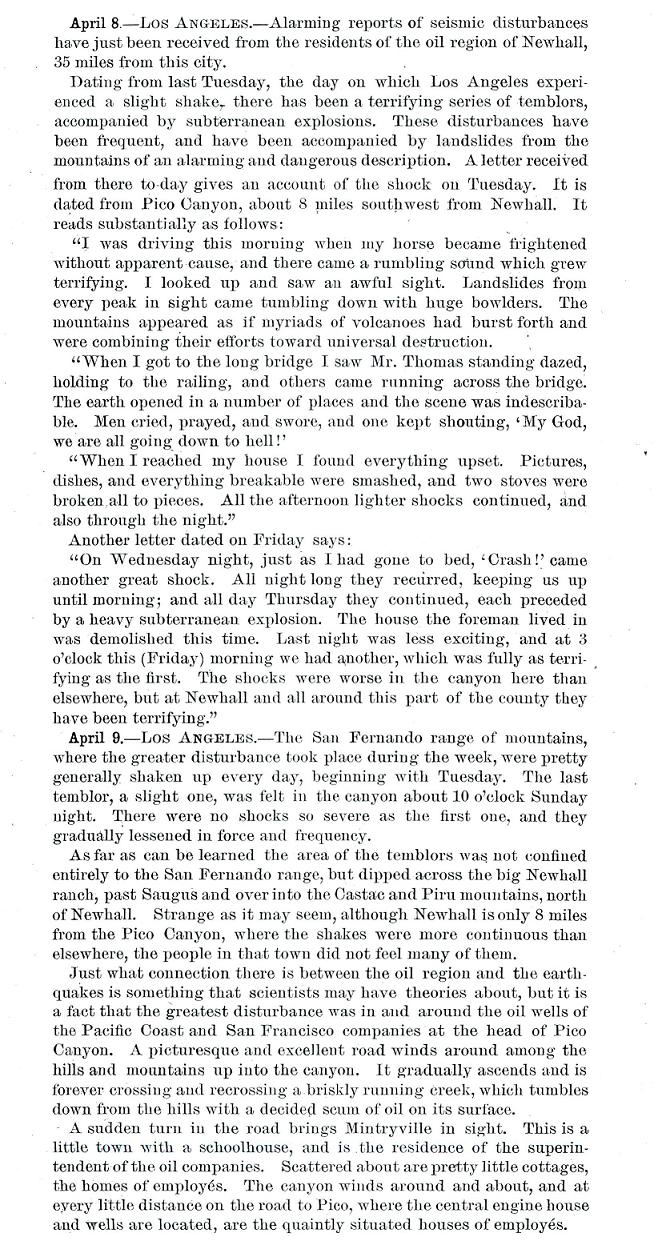
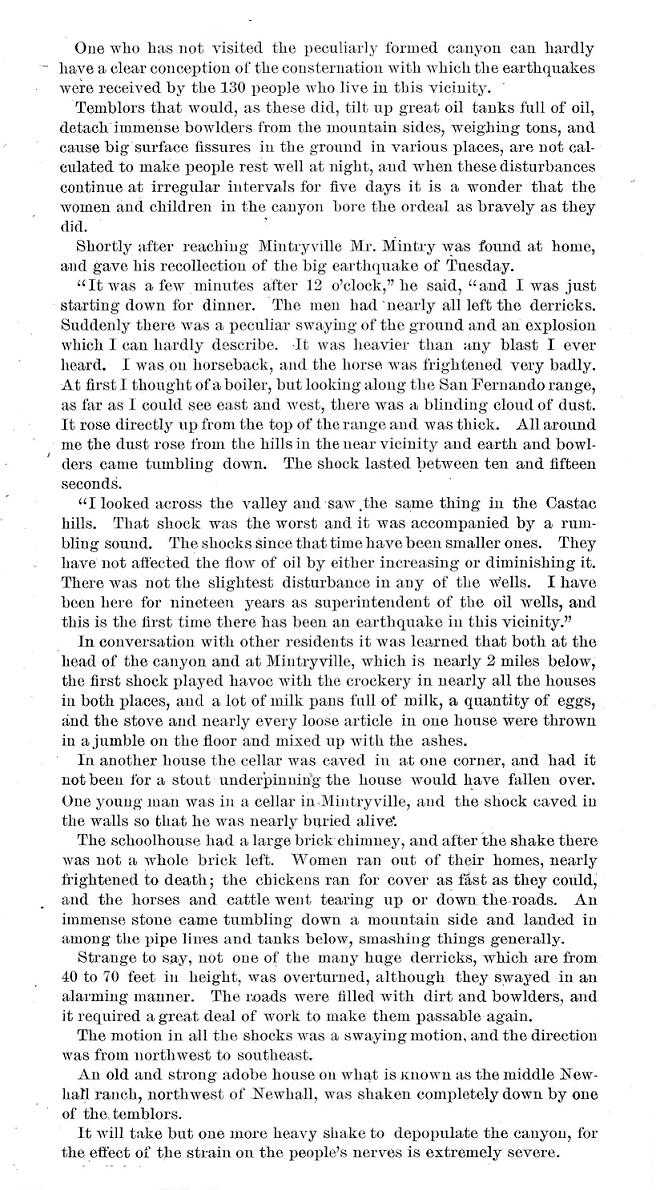
Sources
